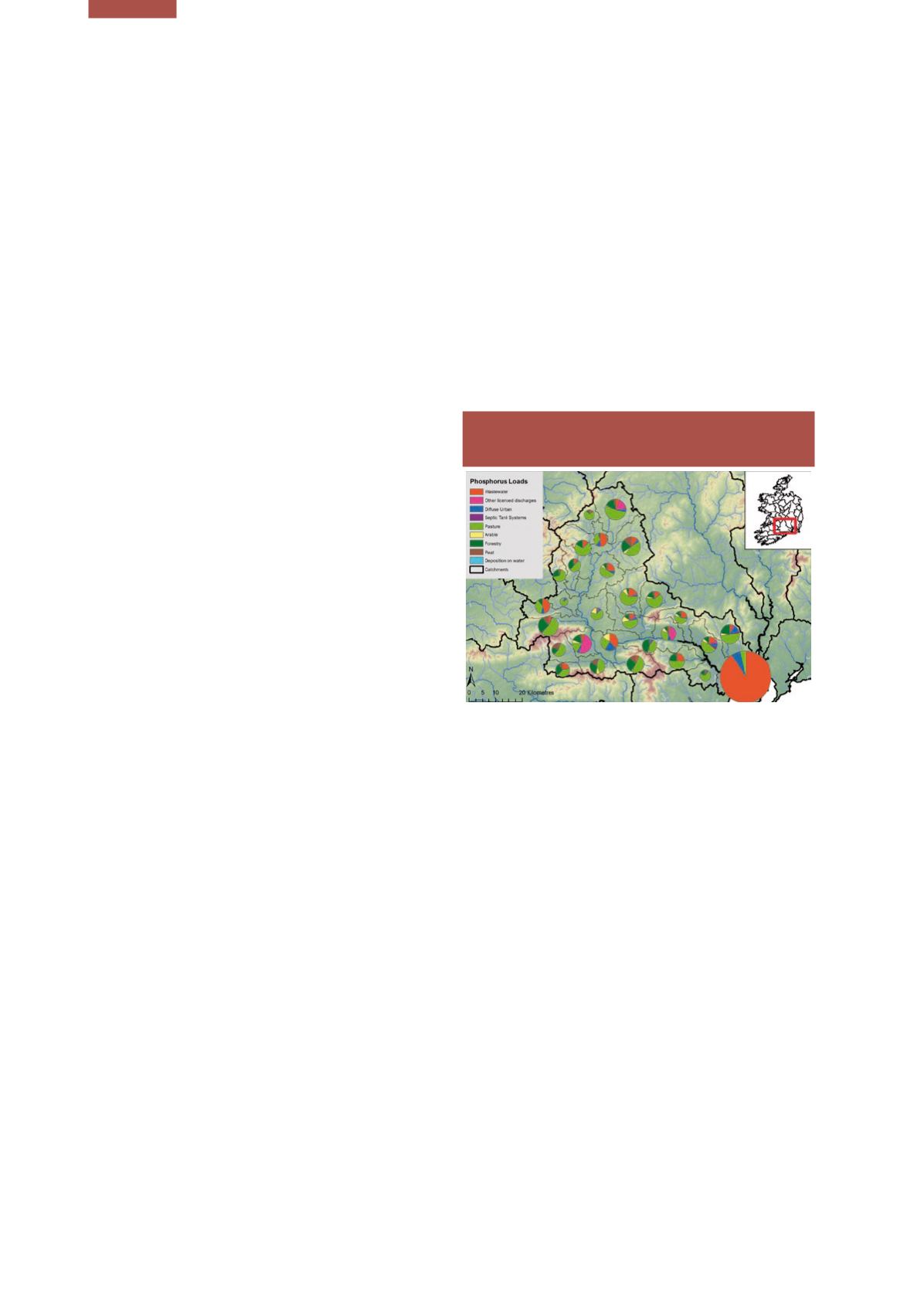

Ireland’s Environment – An Assessment 2016
218
of sites) compared with 584 between 1987 and 1990
and 82 between 2001 and 2003. This is an area where
substantial effort is required to protect the few remaining
highest quality river sites and return impacted ones back to
their earlier extremely high quality.
The findings from farm inspections carried out to
implement the Good Agricultural Practices Regulations
indicate that improvements are needed in the
management of manures and organic fertilisers on
farms. The new catchment risk-based approach being
promoted by the EPA to identify potential Critical Source
Areas (CSAs) of pollution is designed to focus water
management measures where they will be most effective.
This will be particularly important in ensuring that
agricultural expansion plans under Food Wise 2025 are
achieved in an environmentally sustainable manner.
Urban waste water is still one of the principal pressures
on water quality in Ireland. There is a need for continued
investment in water services in urban areas, where
many waste water treatment facilities are listed on EPA
priority lists for improvements. This investment is needed
to provide, upgrade and manage the sewer networks
and treatment facilities necessary to treat sewage and
industrial water to the standard needed to protect human
health, and water quality in our rivers, lakes and coastal
areas. This investment is also needed to reverse the recent
decline in capital expenditure and address the fact that, in
many urban areas, waste water treatment does not meet
the requirements of the Urban Waste Water Treatment
Directive or the standards set in EPA authorisations (EPA,
2015c). The four priority issues that must be addressed
are (1) to provide the necessary infrastructure and
optimise the operation and maintenance of all plant and
equipment, (2) to eliminate the discharge of raw sewage,
(3) to implement plans to prevent pollution by waste
water discharges and restore affected waters to good
quality and (4) to carry out improvements identified in
risk assessments to protect freshwater pearl mussels and
shellfish waters.
The recent regulation of septic tanks is an example
of how local action can make a difference to the
protection of human health and the environment. The
inspections of septic tanks by local authority staff, as
part of the National Inspection Plan, have for the first
time provided data on the performance of individual
septic tanks (EPA, 2015f). The results show that many of
these systems are not properly maintained, yet there are
simple steps that homeowners can take to keep their
systems operating properly.
Recent research as part of the Towards Integrated Water
Management (TIMe) project indicates that water bodies are
an important part of people’s lives, with 71% of people
surveyed visiting a water body at least once a month (EPA,
2015g). The overwhelming majority of the respondents
in the survey felt that local communities should have a
say in how the water environment is managed. One of
the main measures now being implemented to improve
and protect water quality is the use of an integrated and
evidence-based approach to managing water catchments.
This new approach will require much better targeting of
interventions such as the identification of the sources of
nutrient loadings to catchments (see Figure 13.4 as an
example), to restore and protect water quality as well
as a greater community involvement in protecting and
managing our water resources.
Figure 13.4
Sources of Phosphorus in the
Suir Sub-Catchments (Source: EPA)
The Marine Environment and Seas Around
Ireland
Integrating coastal and estuarine policies with nature
and water protection would bring benefits for
environmental protection.
Ireland’s marine territory is one of the largest in the
European Union being nearly 10 times its land area. It is
highly productive and provides a sustaining foundation for
a rich mosaic of marine life. Ireland’s marine environment
has remained relatively unpolluted; however, the level
of environmental stress both from internal and external
sources has increased.
Untreated sewage is discharged at 36 estuarine or coastal
locations. The “treated” effluent discharged from 10
of the country’s large waste water treatment plants to
estuarine or coastal water failed to meet effluent quality
standards. Overall, 71% (46 out of 65) of the urban areas
that have inadequate treatment or do not meet mandatory
EU standards discharged to estuarine or coastal locations
in 2015 (D. Shannon, EPA, August 2016, personal
communication).
Marine litter is now a global issue and the impacts can
be seen on even the remotest of our beaches. While litter
is a key marine environment and biodiversity challenge,


















